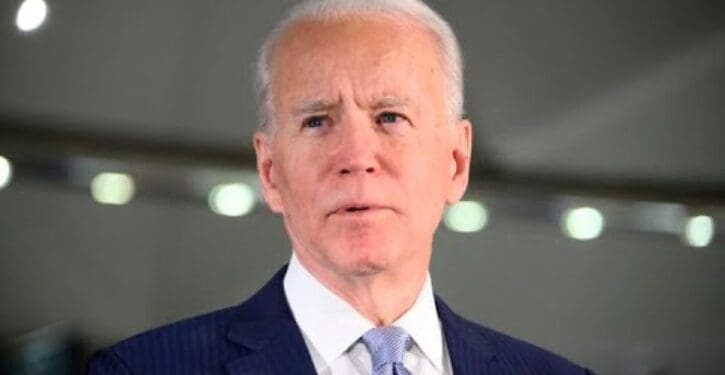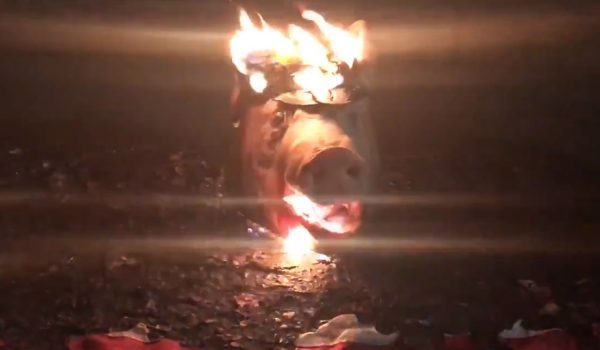
When murder rates are rising, it’s hard to cut prison populations without harming public safety. But that’s what Joe Biden wants to do.
Cities are plagued by a “sharp rise in violent crime,” reports the Wall Street Journal. “In large cities across America, murders are up sharply,” notes the New York Times. Shootings “more than tripled” in New York City over the last 28 days, “compared to last year,” reported the New York Daily News. Chicago saw a 139% increase in murders in July, according to the Sun-Times. Minneapolis has had twice as many murders this year.
Yet Biden has proposed a “$20 billion grant program to encourage states to reduce incarceration” by a minimum of 7%.
Will this presidential election be the most important in American history?
That likely means releasing violent criminals, who comprise most of the state prison population. In 2017, the Bureau of Justice Statistics found that 55% of state prison inmates in America were there for “violent offenses,” and only 15% for drug crimes (such as drug dealing and manufacturing).
Violent offenses include murder, kidnapping, manslaughter, rape, sexual assault, and armed robbery. They don’t include other serious offenses that endanger people’s lives, such as as drunk driving or home invasions.
Most drug offenders aren’t there for just using drugs. As the progressive Marshall Project noted in 2015, “Only 4 percent” of state prison inmates “are there for drug possession. An additional 12 percent are incarcerated for drug sales, manufacturing, or trafficking.” As a result, “freeing potheads and shoplifters is not enough” to seriously shrink the prison population.
If any inmates should be released, it ought to be non-violent drug users. But even if every inmate in prison for drug possession were released, that would reduce the state prison population by only 4% — not enough to reach Biden’s 7% target. And Biden hasn’t even advocated that: In fact, he opposes legalizing marijuana. So states might instead release serious criminals, such as murderers or rapists, to meet Biden’s target.
Releasing 7% of inmates will increase the crime rate over what it otherwise would be, although it may not rise in absolute terms. Crime rates have been slowly falling for years, due to the aging of the population (violent crime is committed disproportionately by young men), and improved crime-fighting technologies and forensics. Releasing inmates will probably reduce the rate of decline, rather than increasing the crime rate in absolute terms. Thus, even if Biden’s federal incentives are conditioned on the crime rate not rising, it doesn’t mean that the prison releases they incentivize will not raise the crime level over what it would otherwise be.
As the National Bureau of Economic Research has noted, “Sentence Enhancements Reduce Crime.” For example, California’s Proposition 8 cut the crime rate by giving repeat offenders “longer sentences,” and thus keeping them off of the streets. Other studies have found that harsher penalties deter people from committing murder.
This year, murder rates have temporarily spiked, perhaps to the Minneapolis effect. But that will making it easier for the murder rate to fall in the future years even if murderers are released too soon, masking any negative effects of the Biden crime plan.
Releasing inmates may reduce prison budgets, but it can increase other costs to taxpayers and society. If not imprisoned, a career criminal can inflict hundreds of thousands of dollars of economic harm annually — far more than the cost of jailing that criminal. In a 1998 study in the Journal of Quantitative Criminology, Mark Cohen of Vanderbilt University estimated that there were “$165,000 in victim costs per year of a criminal’s career” for a typical “career criminal,” including “lost wages and medical bills” and “lost quality of life to victims.” Dangerous criminals can do serious harm to the economy if they are not kept in prison.
If Biden’s $20 billion in grants for reducing incarceration become law, that will give states a financial incentive to start releasing inmates — even violent inmates — in hopes that they can somehow manage to do so without increasing the crime rate.
That may be wishful thinking on states’ part, but desperation leads to wishful thinking, and many states’ financial situation is desperate now.
Cash-strapped states currently face massive budget deficits because of the shutdown of the economy due to COVID-19. Many states are eager to cut costs by reducing prison populations, and eager to collect as much federal grants as possible.
Due to the coronavirus pandemic, California’s state revenue is expected to fall by 16-21% this year, according to the National Conference of State Legislatures. New Jersey’s revenue is expected to fall by 18%, and New Mexico’s revenue is expected to fall by 22-30%.




